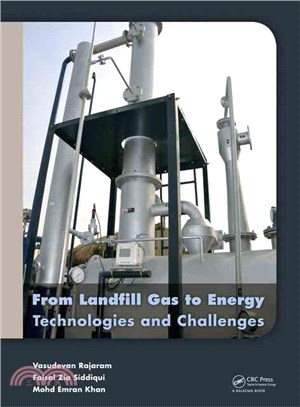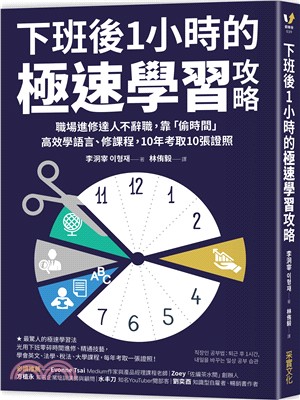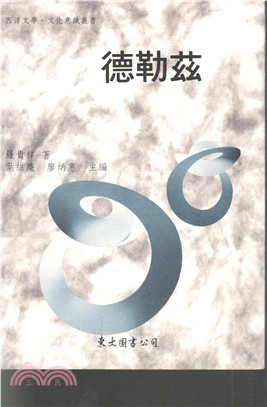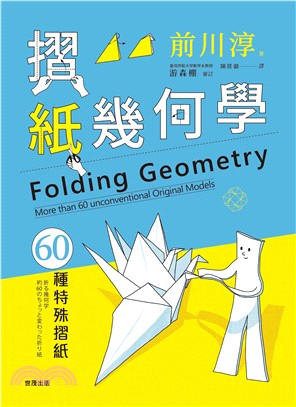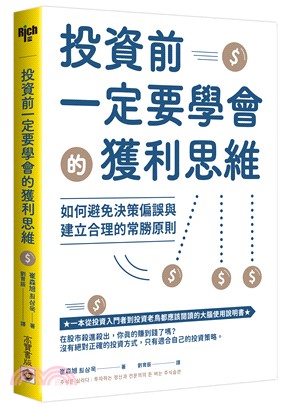From Landfill Gas to Energy:Technologies and Challenges
- ISBN13:9780415664745
- 出版社:CRC Press UK
- 作者:Raj Rajaram; Faisal Zia Siddiqui and M. Emran Khan
- 裝訂/頁數:精裝/325頁
- 規格:24.6cm*17.4cm (高/寬)
- 版次:1
- 出版日:2011/12/21
商品簡介
Introducing the fundamental concepts of landfill gas management and its needs and importance in the present world energy scenario, this accessible reference volume presents key landfill gas management techniques at regional, national and global levels. In detail, it gives an account of the recent technologies available for landfill gas treatment and its utilization. It summarizes landfill gas prediction models developed in various parts of the world and details their adequacy in various field conditions. Covering both landfill remediation aspects and economic considerations while selecting a landfill gas to energy utilization project, the reader gets familiar with the practical aspects of converting a landfill site. Also, the challenges faced by municipalities and landfill operators in recovering landfill gas as an energy source are described, and solutions are suggested for solving them effectively. These include practical execution problems, governmental issues, and developing policies to encourage investment. The volume also includes various case studies of landfill gas-to-energy utilization projects from around the world, which can be reviewed and customized for the reader’s own application with the help of extensive reference section.
Intended as an overview text for advanced students and researchers in the relevant engineering and technology fields (Environmental, Civil, Geotechnical, Chemical, Mechanical and Electrical), this book will also be particularly helpful to practitioners such as municipal managers, landfill operators, designers, solid waste management engineers, urban planners, professional consultants, scientists, non-governmental organizations and entrepreneurs.
作者簡介
Mr. Faisal Zia Siddiqui is an environmental engineer having 15 years of experience in the field of solid waste management. He has worked on several landfill gas to energy projects in India. The scope of these projects included quantitative and qualitative assessment of waste and landfill gas emission modeling. Mr Siddiqui obtained his B.Sc in Chemical Engineering in 1996 from Aligarh Muslim University (A.M.U), Aligarh, India and M. Tech in Energy and Environment Management in 2001 from Indian Institute of Technology (IIT), Delhi, India. He has numerous publications to his credit in various International and national conferences, seminars and journals. He is presently Assistant Professor in the University Polytechnic, Faculty of Engineering and Technology, A.M.U, India. He has previously worked with the World Bank, Confederation of Indian Industries, Tetra Tech India Limited and Sycom Project Consultants, India. He is presently pursuing his PhD in the area of landfill gas recovery.
Dr Emran Khan is a mechanical engineer with over 26 years of experience in teaching and research in the areas of clean energy systems, renewable energy systems, life cycle analysis of energy systems, energy auditing and energy recovery from solid waste. Dr Khan did his B.Sc in Mechanical Engineering in 1984 from A.M.U., M.Tech in Energy Studies in 1992 from IIT, Delhi and Ph.D in 1997 from Delhi University, India. He has several publications in various International and national conferences, seminars and journals. He is presently serving as Professor in the Department of Mechanical Engineering, Faculty of Engineering and Technology, Jamia Millia Islamia University, Delhi, India. Dr Khan is co-principal investigator for a research project on pilot demonstration of clean technology for landfill gas recovery sponsored by the Ministry of Environment and Forests, Government of India. The project can be replicated to other landfill sites in India.
目次
2 Planning and design of LFG recovery system 2.1 Criteria for identifying suitability of landfill sites for LFG recovery2.1.1 Planning and design 2.1.2 Construction 2.1.3 Operation 2.1.4 Restoration and aftercare 2.2 Steps for conducting a landfi ll site assessment for LFG recovery 2.2.1 Siting and design considerations 2.3 LFG recovery from open dumps, controlled landfills, and sanitary landfills 2.3.1 LFG recovery from open dumps 2.3.2 Landfi ll bioreactor 2.3.3 Sustainable landfills 2.4 Conceptual design of LFG extraction system 2.4.1 Extraction wells 2.4.2 Wellheads 2.4.3 Collector pipes 2.4.4 Extraction pumps 2.5 Horizontal and active LFG collection systems 2.6 LFG recovery from active well collection system 2.6.1 Cylinder method 2.7 LFG recovery from passive well collection system 2.8 Header system layout 2.9 Guidelines for conducting a pump test 2.10 Standard testing methodology for LFG 2.11 Initial testing setup/installation 2.11.1 LFG extraction wells 2.11.2 Pressure monitoring probes 2.11.3 LFG treatment components 2.11.4 Extraction well locations 2.11.5 Pressure monitoring probes 2.12 Flow testing procedures 2.12.1 Leak testing 2.12.2 Static testing 2.13 Short term dynamic test 2.13.1 Blower/well confi guration 2.13.2 Infi ltration monitoring 2.13.3 Blower stabilization monitoring 2.13.4 Pressure probe averaging 2.13.5 ROI determination 2.13.6 Depth influence calculation 2.14 Long term dynamic test 2.14.1 Total extracted LFG calculations 2.14.2 Stabilized flow calculations 2.14.3 Stabilized ROI calculations 2.15 Orifice calibration procedure 2.16 Active and passive condensate collection 2.17 Landfill leachate treatment 2.17.1 Physico-chemical treatment 2.17.2 Biological treatment References
3 Landfill gas modeling 3.1 Introduction3.2 Conceptualization of LFG model 3.3 Benefits of LFG modeling3.3.1 Sizing LFG extraction system 3.3.2 Projections of LFG emissions 3.3.3 Monitoring and regulatory compliance 3.4 Classifi cation of LFG models 3.4.1 Zero-order model 3.4.2 Constant rate model 3.4.3 First-order model 3.4.4 Modifi ed first-order model 3.4.5 Multiphase model 3.4.6 Second-order model 3.4.7 Scholl Canyon model 3.4.8 Stoichiometric model 3.4.9 Triangular model 3.4.10 Palos Verdes model 3.4.11 Sheldon Arleta model 3.4.12 GASFILL model 3.4.13 LandGEM model 3.4.14 LFGGEN model 3.4.15 EMCON MGM model 3.4.16 TNO model 3.4.17 Multi-phase model (Afvalzorg) 3.4.18 GasSim model 3.4.19 EPER model France 3.4.20 EPER model Germany 3.4.21 Colombia model 3.4.22 CALMIM model 3.4.23 Philippines model 3.4.24 Thailand model 3.4.25 Ukraine model 3.4.26 China model 3.4.27 Mexico model 3.4.28 Ecuador model 3.4.29 Central America model 3.4.30 IPCC model 3.4.31 RET screen model 3.4.32 IGNiG Model 3.4.33 Finite element model 3.4.34 Tabasaran model 3.5 Uncertainties in LFG model predictions 3.6 Validation of LFG models 3.7 Customization of LFG models 3.7.1 Methane generation potential 3.7.2 Degradable organic carbon 3.7.3 Methane fraction 3.7.4 Methane correction factor 3.7.5 Methane oxidation factor 3.7.6 Decay constant 3.7.7 Methane recovery rate References
4 LFG monitoring and economic feasibility evaluation 4.1 LFG monitoring 4.1.1 Monitoring locations within the waste body 4.1.2 Monitoring locations outside the waste body 4.1.3 Pressure monitoring 4.1.4 Monitoring frequency 4.1.5 LFG trigger levels 4.1.6 Monitoring surface emissions 4.1.7 Monitoring locations 4.1.8 Parameters for analysis 4.1.9 LFG within and outside the waste body 4.1.20 Flare and utilization plants 4.2 Test methods/protocols for LFG monitoring 4.3 LFG migration and dynamics in borewell 4.4 Standardized approach for LFG probe assessment 4.4.1 Pre-assessment activities 4.4.2 Initial monitoring probe condition assessment 4.4.3 Gas monitoring assessment 4.4.4 Vacuum testing 4.4.5 Video borescope inspection 4.4.6 Lithology evaluation 4.5 Economic feasibility of LFG to Energy project 4.5.1 Capital and O&M cost 4.5.2 Energy sales revenue 4.5.3 Economic feasibility 4.5.4 Comparison of economically feasible options 4.5.5 Project fi nancing options 4.5.6 Perspective of lenders/investors 4.5.7 Financing approaches 4.5.8 Evaluation of costs and benefits 4.5.9 Conclusions References
5 Landfill gas treatment technologies 5.1 Inroduction 5.2 Passive venting of LFG 5.3 LFG combustion mechanism 5.4 LFG fl aring system 5.4.1 Design of a fl aring system 5.4.2 Types of fl aring system 5.4.3 Description of LFG Flaring System 5.4.4 Comparison of open and enclosed fl ares 5.5 Case studies on LFG fl aring systems 5.5.1 Aleksandrovsk, Lugansk oblast, Ukraine 5.5.2 Gorai landfi ll, Mumbai 5.5.3 San Pedro, Manila 5.6 LFG cleaning and upgradation 5.7 Types of LFG treatment technologies 5.8 Water scrubbing using DMT technology 5.9 Water Scrubber using GmBH technology 5.10 Water Scrubbing using ISET technology 5.11 Physical Absorption using ISET technology 5.12 Pressure Swing Adsorption using DMT technology 5.13 Pressure Swing Adsorption using ISET technology 5.14 Pressure Swing Adsorption using GmBH technology 5.15 Chemical absorption of CO2 5.16 Chemical absorption using DMT technology 5.17 Chemical absorption using ISET technology 5.18 Chemical absorption using GmBH technology 5.19 Membrane separation Natcogroup technology 5.20 Membrane separation ISET technology 5.21 Cryogenic separation 5.22 Cryogenic condensation technology 5.23 Mixed Refrigerant liquefaction technology 5.24 SAGTM technology 5.25 SWOP™ technology 5.26 ISET technology 5.27 Comparison of different LFG treatment and upgrading technologies 5.27.1 Impact on the environment 5.27.2 Ease of operation 5.28 Conclusion References
6 Landfill gas utilization technologies 6.1 Introduction 6.2 LFG to energy technologies 6.3 Microturbines 6.4 Reciprocating internal-combustion engines 6.5 Stirling cycle engines 6.6 Steam turbines 6.7 Direct use 6.8 Alternative fuels 6.8.1 High Btu LFG 6.8.2 LFG to Compressed Natural Gas 6.8.3 LFG to Liquefi ed Natural Gas 6.8.4 Application of LFG as a vehicle fuel 6.8.5 LFG/LNG issues 6.9 Power generation using LFG-driven engines 6.9.1 Design considerations 6.9.2 LFG power potential 6.9.3 Electricity generation using internal combustion engines 6.9.4 Electricity generation using large turbines 6.9.5 Electricity generation using microturbines 6.9.6 Organic rankine cycle power plant 6.10 Boilers 6.10.1 LFG utilization for boilers 6.10.2 Design modifi cations 6.11 Fuel cells References
7 Remediation of landfill sites 7.1 Introduction 7.2 Planning for landfill remediation 7.3 Multiple uses of landfills 7.4 Recovery of landfi lls for higher land uses 7.5 Procedure for remediation of landfill sites with low LFG potential 7.5.1 Site characterization study 7.5.2 Potential economic benefits 7.5.3 Investigate Regulatory requirements 7.5.4 Health and safety plan 7.5.5 Project costs 7.6 Recovering land through waste mining and processing 7.6.1 Landfill mining process 7.6.2 Excavation and separation 7.6.3 Processing for reclamation of recyclable material 7.6.4 Material recovery 7.6.5 Composition of waste 7.6.6 Waste recovery effi ciency 7.6.7 Potential for energy recovery 7.6.8 Benefi ts of landfill mining 7.6.9 Limitations of landfill mining 7.6.10 Economic aspects of landfill mining 7.6.11 Cost and benefi ts of landfill mining 7.7 Landfi ll mining case study 7.7.1 Closing the circle project7.7.2 Characterisation of landfilled waste 7.7.3 Material Recovery 7.7.4 Energy recuperation 7.7.5 Recovery of natural land 7.7.6 Carbon footprint 7.8 Identifi cation and control of landfill fires 7.8.1 Characterization of landfill fire 7.8.2 Immediate actions 7.8.3 Extinguishment methods 7.8.4 Monitoring and management 7.8.5 Fire prevention and control plan 7.9 Operation and maintenance of landfill site 7.9.1 LFG monitoring system 7.9.2 LFG wellfi eld, conveyance, and condensate systems 7.9.3 LFG blower systems 7.9.4 LFG fl are system 7.9.5 LFG energy recovery systems References
8 Landfill gas case studies 8.1 Introduction 8.2 Suzhou Qizi Mountain LFG to energy project, China 8.3 Târgu Mures, LFG to energy project, Romania 8.4 Wingmoor, LFG to energy project, UK 8.5 McKinney LFG to energy project, Texas, USA 8.6 Lubna, Sosnowiec and Legajny LFG to energy project, Poland 8.7 Palembang LFG to energy project, Indonesia 8.8 Monterey Regional Waste Management District LFG to energy project, Marina, CA 8.9 La Pradera LFG to energy project, Colombia 8.10 Bandeirantes LFG to energy project, Brazil 8.11 Dunsink LFG to energy project, North Dublin 8.12 LFG to energy project, Niagara 8.13 McRobies Gully LFG to energy project, Tasmania 8.14 City of Bergen LFG to energy project, Norway 8.15 NovaGerar LFG to energy project, Brazil 8.16 Ethekwini LFG to energy project, Durban 8.17 Horotiu, Hamilton LFG to energy project, New Zealand 8.18 Arthurstown LFG to energy project, Ireland 8.19 Ano Liossia LFG to energy project, Greece8.20 Puente Hills LFG to energy project, California 8.21 Greater Sudbury and Halton Region, LFG to energy project, Canada 8.22 Chelyabinsk LFG to energy project, Russia 8.23 Torun LFG to energy project, Poland 8.24 Kristianstad LFG to energy project, Sweden 8.25 Belrose LFG to energy project, Australia 8.26 Zámbiza LFG to energy project, Ecuador 8.27 Vlierzele LFG to energy project, Belgium 8.28 Antioch LFG to energy project, Illinois 8.29 Chengdu City LFG to energy project, China 8.30 Gaoantun LFG to energy project, China 8.31 Mentougou LFG to energy project, China 8.32 Gorai LFG to energy project, India 8.33 Khmelnitsky LFG to energy project, Ukraine 8.34 Belo Horizonte LFG to energy project, Brazil 8.35 Olavarria LFG to energy project, Argentina 8.36 Okhla LFG to energy pilot project, India 8.37 Pre-feasibility studies for LFG recovery in Columbia 8.38 LFG energy project in Russian Federation 8.39 Pre-feasibility studies in the Republic of Korea 8.40 Conclusion References
9 Challenges in utilization of LFG in developing countries 9.1 Introduction 9.2 Barriers in LFG to energy project development 9.2.1 Technological intricacies 9.2.2 Economic limitations 9.2.3 Awareness of regulators and policy makers 9.2.4 Power system interconnection 9.2.5 National policy framework 9.3 Action plan for LFG management 9.3.1 Legislation, regulation and standard development 9.3.2 Economic incentives 9.3.3 Education and awareness 9.3.4 Information dissemination and training 9.3.5 Institutional strengthening 9.3.6 Demonstration activities 9.3.7 Financial mechanism 9.4 Framework for implementation of action plan 9.5 Conclusions References
Appendix A Format for monitoring of LFG Appendix B Format for conducting waste audit at a landfill site Appendix C Format for waste characterization Appendix D Useful websites Appendix E Glossary of terms in landfill gas management Appendix F List of abbreviations Appendix G Template for country-specific LFG action plan Appendix H LFG calculation worksheet Appendix I List of LFG to PNG/CNG Technology Providers Subject index
主題書展
更多主題書展
更多書展本週66折
您曾經瀏覽過的商品
購物須知
外文書商品之書封,為出版社提供之樣本。實際出貨商品,以出版社所提供之現有版本為主。部份書籍,因出版社供應狀況特殊,匯率將依實際狀況做調整。
無庫存之商品,在您完成訂單程序之後,將以空運的方式為你下單調貨。為了縮短等待的時間,建議您將外文書與其他商品分開下單,以獲得最快的取貨速度,平均調貨時間為1~2個月。
為了保護您的權益,「三民網路書店」提供會員七日商品鑑賞期(收到商品為起始日)。
若要辦理退貨,請在商品鑑賞期內寄回,且商品必須是全新狀態與完整包裝(商品、附件、發票、隨貨贈品等)否則恕不接受退貨。




